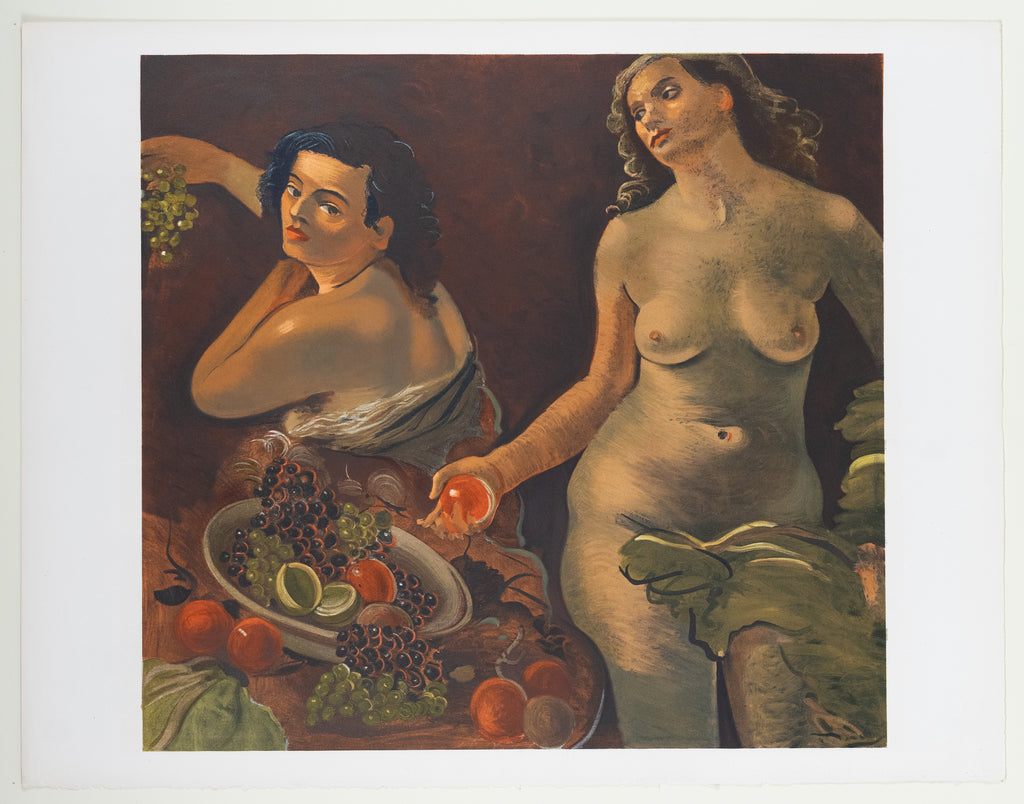André DERAIN (1880 - 1954)(after)
NAME: Deux femmes nues et nature morte (1935)
ENGLISH NAME: Two naked women and still life
MEDIUM: Color lithograph 1935 painting
SIGNATURE: Signed in the plate lower left
SIZE: 17.5 x 21.5 inches
ABOUT:
This album, the fifth in a series devoted to the collection of Mr. Pierre Levy, was printed in 1000 copies on Arches vellum, completed to print on November 4, 1970 by Mourlot for reproductions of the canvases of André Derain and by Fequet and Baudier for the typography.
Fernand Mourlot, Paris 1970.
Printed copy for Mr. Jean de Dreuzy
IMAGE is ACTUAL lithograph.
Please contact us to request further information or additional images.
Possible browning of arches paper due to age, but image is in excellent condition.
André Derain (1880 – 1954)
André Derain was born in Chatou. Part of a middle-class family, who’s father was a pastry chef. His initial studies were in engineering at École des Mines in Paris but he left in 1898. However, André loved to draw. He had shown great talent at the age of 15 (1895) when he studied with Father Jacomin. He stayed with the Father until 1898 where he left to study at the studio of Eugene Carriere. He met Matisse this studio a few months later.
After arriving at Carriere’s studio, Derain met Vlaminck and they were instant friends. It seems that Derain and Vlaminck were such good friends, they used the same models and the same mistresses. It was this rebellious attitude that shocked many Chatou inhabitants. But he was also key in developing the Fauvism movement.
After serving in the military, Derain started to exhibit his pieces at the Salon d’Automne in Paris where he was successful in selling four of his paintings at the exhibit. In 1907 he moved to Montmartre and was part of Le Bateau-Lavoir where Picasso also hung out. He married Alice Prense while there. He accompanied Picasso to Avignon and was fascinated with African masks that he saw in the Negro Museum there.
In 1913 started to work in the “gothic style” symbolized by the use of color and mixture of Romanesque, Byzantine and Cubist formal elements. In 1914, he was mobilized to serve in the military until 1919. He illustrated André Breton’s book, “Mont de Piete” during his service.
Upon his return he started designing sets for theatre and did approximately eleven ballets. He abandoned most of his former friends and his career flourished with him winning the Carnegie Prize in 1928.
In World War II, the Germans occupied his Chambourcy home where his wife was and they moved to Paris to an apartment he had there for painting. He would stay there or with his mistress at her home. In 1941, he became associated with the German’s propaganda machine and the French considered him a traitor. However, he denied any help given to them.
After his second illegitmate child was born his wife, Alice, left him and attempted to seize control of their finances. In 1954 he was hit by a truck and died shortly afterward.



